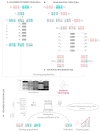Applications of Genomic Tools in Plant Breeding: Crop Biofortification
- PMID: 35328507
- PMCID: PMC8950180
- DOI: 10.3390/ijms23063086
Applications of Genomic Tools in Plant Breeding: Crop Biofortification
Abstract
Crop breeding has mainly been focused on increasing productivity, either directly or by decreasing the losses caused by biotic and abiotic stresses (that is, incorporating resistance to diseases and enhancing tolerance to adverse conditions, respectively). Quite the opposite, little attention has been paid to improve the nutritional value of crops. It has not been until recently that crop biofortification has become an objective within breeding programs, through either conventional methods or genetic engineering. There are many steps along this long path, from the initial evaluation of germplasm for the content of nutrients and health-promoting compounds to the development of biofortified varieties, with the available and future genomic tools assisting scientists and breeders in reaching their objectives as well as speeding up the process. This review offers a compendium of the genomic technologies used to explore and create biodiversity, to associate the traits of interest to the genome, and to transfer the genomic regions responsible for the desirable characteristics into potential new varieties. Finally, a glimpse of future perspectives and challenges in this emerging area is offered by taking the present scenario and the slow progress of the regulatory framework as the starting point.
Keywords: biofortification; breeding; cisgenesis; crop; intragenesis; metabolic GWAS (mGWAS); single-nucleotide polymorphisms (SNPs); trangenesis.
Conflict of interest statement
The authors declare no conflict of interest. The funders had no role in the writing of the manuscript, or in the decision to publish it.
Figures



Similar articles
-
Genetically modified crops: current status and future prospects.Planta. 2020 Mar 31;251(4):91. doi: 10.1007/s00425-020-03372-8. Planta. 2020. PMID: 32236850 Review.
-
Biofortification to improve food security.Emerg Top Life Sci. 2023 Dec 13;7(2):219-227. doi: 10.1042/ETLS20230066. Emerg Top Life Sci. 2023. PMID: 37962270
-
Genetically modified (GM) crops: milestones and new advances in crop improvement.Theor Appl Genet. 2016 Sep;129(9):1639-55. doi: 10.1007/s00122-016-2747-6. Epub 2016 Jul 5. Theor Appl Genet. 2016. PMID: 27381849 Review.
-
Cisgenesis and intragenesis: new tools for improving crops.Biol Res. 2013;46(4):323-31. doi: 10.4067/S0716-97602013000400003. Biol Res. 2013. PMID: 24510134 Review.
-
Current progress and challenges in crop genetic transformation.J Plant Physiol. 2021 Jun;261:153411. doi: 10.1016/j.jplph.2021.153411. Epub 2021 Apr 5. J Plant Physiol. 2021. PMID: 33872932 Review.
Cited by
-
Studies of genetic diversity and genome-wide association for vitamin C content in lettuce (Lactuca sativa L.) using high-throughput SNP arrays.Plant Genome. 2024 Dec;17(4):e20518. doi: 10.1002/tpg2.20518. Epub 2024 Oct 24. Plant Genome. 2024. PMID: 39447202 Free PMC article.
-
Recent advances of γ-aminobutyric acid: Physiological and immunity function, enrichment, and metabolic pathway.Front Nutr. 2022 Dec 22;9:1076223. doi: 10.3389/fnut.2022.1076223. eCollection 2022. Front Nutr. 2022. PMID: 36618705 Free PMC article. Review.
-
Triumphs of genomic-assisted breeding in crop improvement.Heliyon. 2024 Aug 5;10(15):e35513. doi: 10.1016/j.heliyon.2024.e35513. eCollection 2024 Aug 15. Heliyon. 2024. PMID: 39170454 Free PMC article. Review.
-
Viral-Based Gene Editing System for Nutritional Improvement of Fructan Content in Lettuce.Int J Mol Sci. 2025 Mar 13;26(6):2594. doi: 10.3390/ijms26062594. Int J Mol Sci. 2025. PMID: 40141236 Free PMC article.
-
Combined enhancement of ascorbic acid, β-carotene and zeaxanthin in gene-edited lettuce.Plant Biotechnol J. 2025 Jun;23(6):1954-1967. doi: 10.1111/pbi.70018. Epub 2025 Mar 3. Plant Biotechnol J. 2025. PMID: 40029794 Free PMC article.
References
-
- FAO. IFAD. UNICEF. WPF. WHO . The State of Food Security and Nutrition in the World 2021. Trasforming Food System for Food Security, Improved Nutrition and Affordable Healthy Diets for All. 1st ed. FAO; Rome, Italy: 2021.
-
- UNICEF . World Declaration and 1990–2000 Plan of Action on the Survival, Protection and Development of Children. UNICEF; New York, NY, USA: 1990. First call for children.
-
- Medina-Lozano I., Díaz A. Nutritional Value and Phytochemical Content of Crop Landraces and Traditional Varieties. In: Elkelish A., editor. Landraces—Traditional Variety and Natural Breed. IntechOpen; Rijeka, Croatia: 2021. pp. 95–116.
-
- Neelam K., Rawat N., Tiwari V.K., Kumar S., Chhuneja P., Singh K., Randhawa G.S., Dhaliwal H.S. Introgression of group 4 and 7 chromosomes of Ae. peregrina in wheat enhances grain iron and zinc density. Mol. Breed. 2011;28:623–634. doi: 10.1007/s11032-010-9514-1. - DOI
Publication types
MeSH terms
Grants and funding
LinkOut - more resources
Full Text Sources

